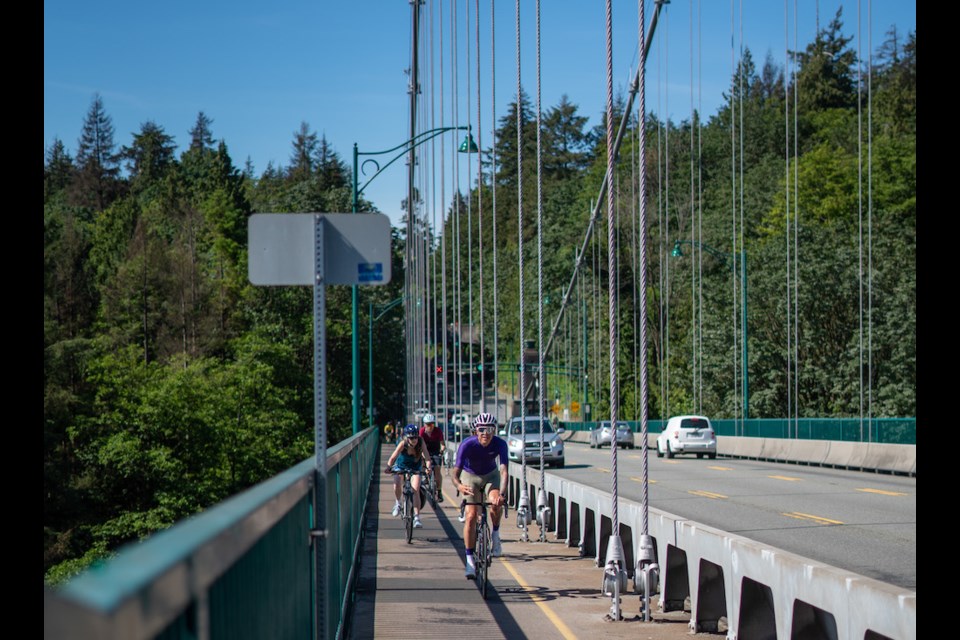The Lions Gate Bridge is the most iconic Vancouver bridge. It spans across the first narrows of Burrard Inlet from downtown Vancouver to North Vancouver.
As with other bridges in the Vancouver, there are two shared, non-partitioned bike and pedestrian paths – one on the east side (northbound) and one on the west side (southbound) of the bridge. Including the north viaduct, the bridge officially measures 1.8km in length.
For cyclists, the east side of the bridge is northbound and the west side is southbound. The bike paths are wide enough for a cyclist to pass another cyclist, but just barely – and there are spots where, by sign, cyclists are prohibited from passing. It is good etiquette/prudent to verbally indicate your intention to pass either a cyclist or a pedestrian.
Though it's generally very safe, there are some safety notes to consider when crossing the Lions Gate Bridge by bicycle. Especially during the summer, there will be a lot of people travelling the bridge; please keep an eye out – especially by the towers/pillars, as people stopping to take pictures of the inlet can pop out onto the bike lane. Also, there are several bumps that in no way can damage your bike, but if you’re not paying careful attention and do not have a solid grip on your handlebar, you could experience a scare. Finally, on very windy days, the bridge can be scary. Cross winds, especially when descending, can cause your bike to be pushed from side to side.
If you were to split the bridge in half north-south, the north side (the side connecting to North Vancouver) is the steeper side, with an approximate grade of 4.5% (according to Strava). When heading back to Vancouver from North Vancouver, the climb can be tiring for new cyclists. Luckily, there are stopping points by the towers/pillars where you can rest.
By corollary, when you are heading to North Vancouver, the north half of the bridge can be a fast descent. If unchecked, a cyclist can easily hit speeds of 50-60 kmph, so some caution is warranted.
The east side of the bridge can be accessed via the Stanley Park Causeway. You can either take the bike path that parallels Lions Gate Bridge Road/Stanley Park Causeway through the park, or you can take Stanley Park Drive, and near the top of Prospect Point Climb, there is an exit that connects Stanley Park Drive to the causeway.
The west side of the bridge can be accessed via Lion’s Gate Bridge Road, as there is a shared bike/pedestrian sidewalk that leads straight onto the bridge.
The Ironworkers Memorial Bridge is my preferred method to get to the North Shore if I am going to Horseshoe Bay, Lonsdale Quay, Cypress or Grouse.
Brian Lim likes to ride bikes (sometimes with his camera). He's a complete and consummate amateur - both in cycling and in photography, and says he doesn't take himself seriously - and neither should you. Lim wants to share his love of cycling, so please reach out if you want to talk! You'll find him on Instagram at @wheelsandwhisky.




